Machinery Milestones: Wood-fuelled tractors
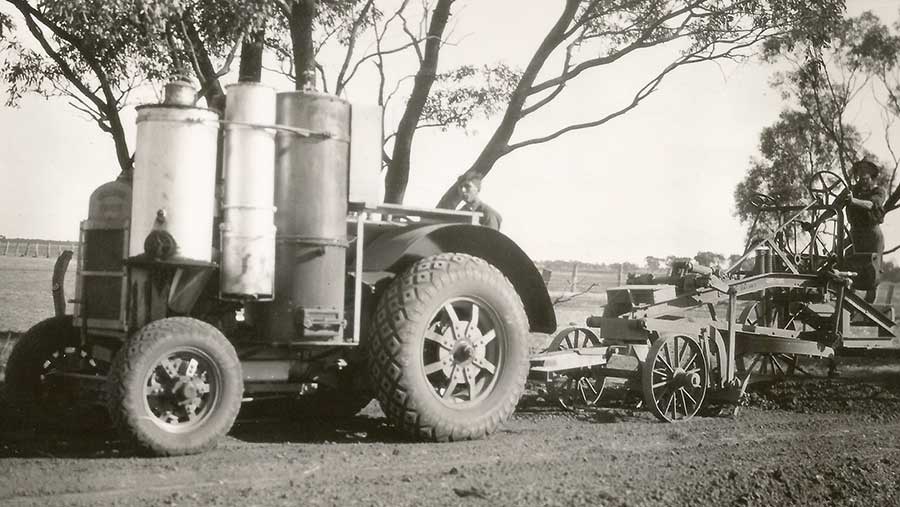 Three gas generators fitted to an Australian farmer's Ronaldson- Tippet Super Drive
Three gas generators fitted to an Australian farmer's Ronaldson- Tippet Super Drive It might sound a bit wacky, but tractors have the potential to be powered by wood – as proven by several farming inventions over the years.
The tractor fuel produced from wood is a gas released when the wood is heated to 700C or more in a specially designed container attached to the tractor. It is called “producer gas” or wood gas and is a mixture of nitrogen, carbon monoxide, carbon dioxide and small amounts of hydrogen.
A wood-burning fire in the base of the container heats small pieces of wood that fill the remaining space in the container, and this releases the gas.
When wood is heated in an open fire, oxygen is available to burn the gas with a flame to produce heat.
But in a producer gas container the fire in the base uses up the available oxygen and the gas generated from the heated wood does not burn and release energy until it reaches the combustion chamber of the engine.
Producer gas can be used to fuel a wide range of power units including gas turbines, fuel cells, spark ignition engines and diesels.
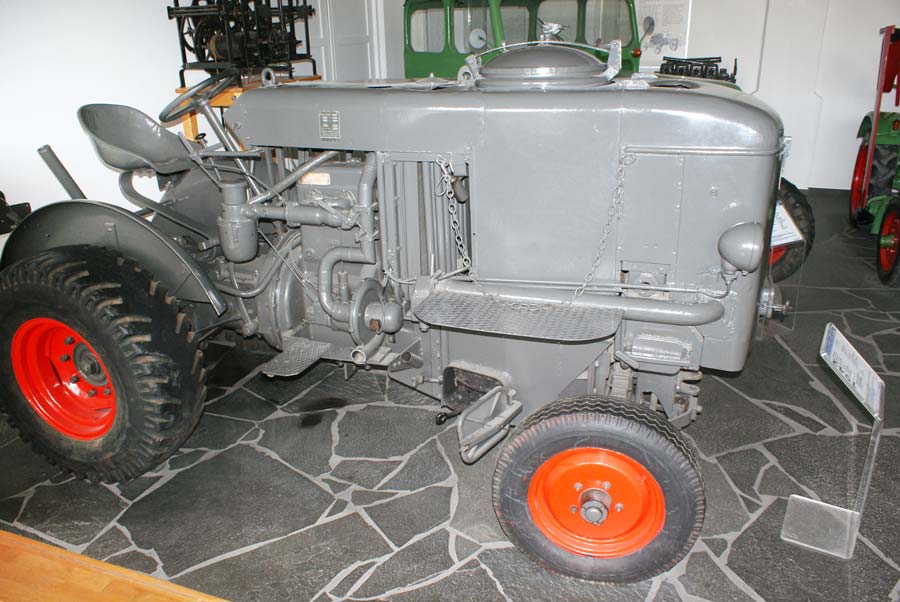
Second World War Fendt G25 tractor with EG60 gas generator and two-cylinder diesel engine
Most of the commercial output of producer gas is from static installations generating gas to be used as fuel for electricity production or to be burned to supply heat for manufacturing processes, and this is still important in countries where timber is plentiful but other energy resources are lacking.
See also: Machinery Milestones: Four-wheel drive tractors
Powering machinery
Commercial production of the gas has a long history. It was being burnt to provide heat for small-scale industrial processes during the early 1800s, particularly in rural areas with a plentiful supply of wood.
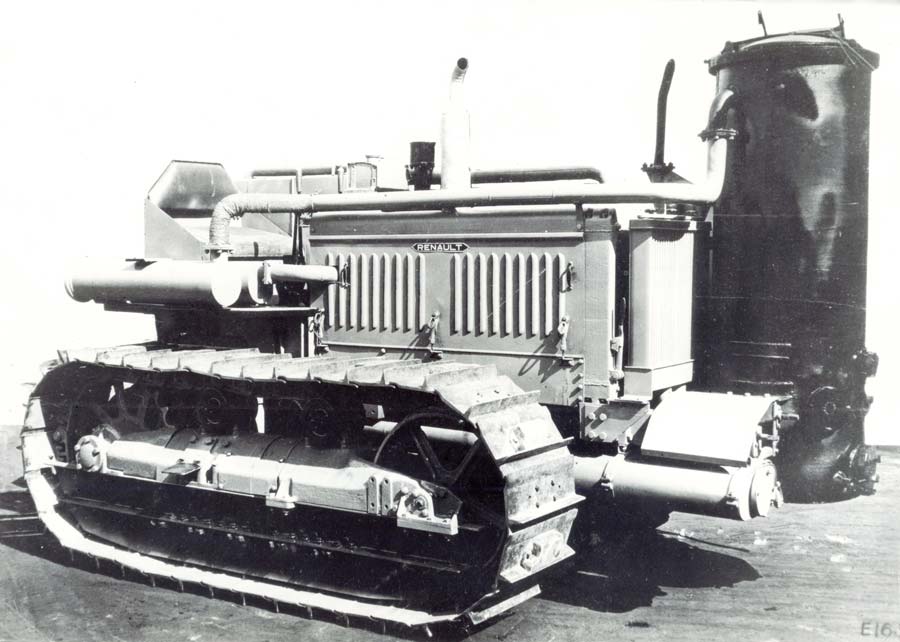
A Renault tracklayer converted to produce wood gas
Portable gas generators that could be used to power vehicles including tractors were available towards the end of the First World War.
There was a shortage of oil-based fuels, consequently, there was a much bigger surge of interest when the lack of engine fuels again became a major problem in the UK and much of Europe during the Second World War.
The importance of providing tractor power to maintain food production had been recognised during the late 1930s as the UK and other European countries prepared for war.
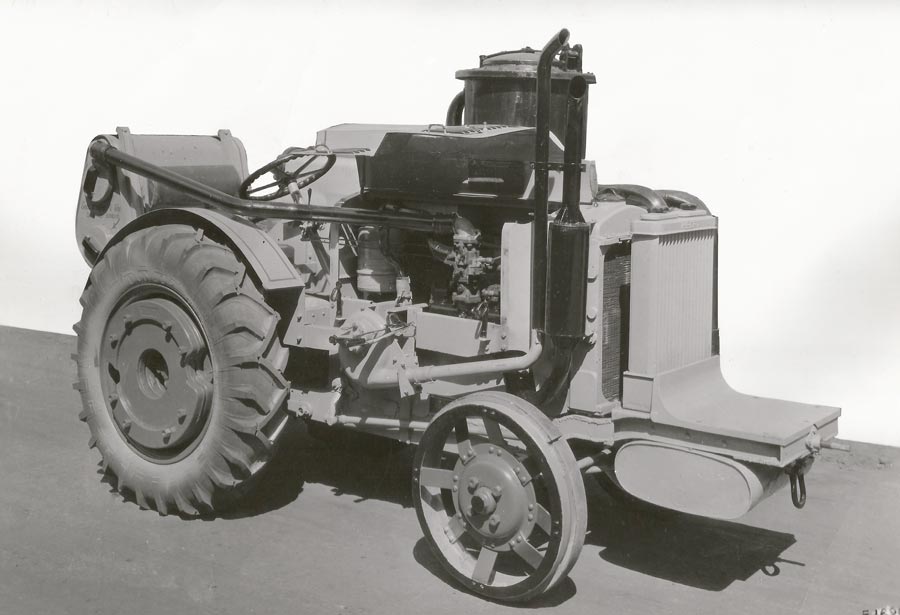
Renault 304 series tractor with gas generator
The German government organised a research project to develop a new producer gas generator specifically for tractors.
Called the EG60 generator, it was more compact and user-friendly than previous designs, and when the fuel shortage became increasingly serious during the war, German tractor companies were not allowed to sell new tractors that were not fitted with the approved gas generator.
Producer gas kits were used in large numbers on tractors in wartime France, the Netherlands and elsewhere in Europe, with a smaller number in the UK, but the kits were not confined to Europe.
Some farmers in Australia equipped their tractors for wood burning because of wartime fears that the Japanese navy might block oil imports.
Paraffin and diesel
Although the wood burning kits provided essential tractor power to maintain food production during the wartime emergency, they were never popular.
Soon after the war had ended and paraffin and diesel were available again, sales of new tractors equipped for wood burning came to an abrupt end in Europe, and tractors previously fitted with the kits were soon converted back to using ordinary fuel.
The only tractors in Germany still retaining their gas generating equipment are in museums or owned by enthusiasts.
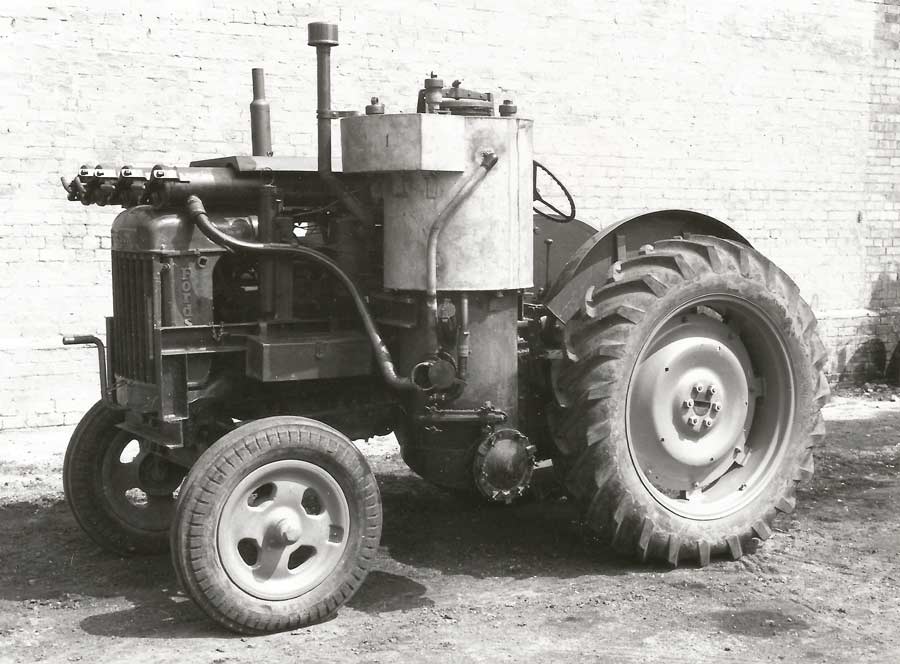
An experimental gas generator fitted to a Fordson Major E27N from about 1949
One of the objections to fuelling tractors with producer gas was the power loss, typically about 15-20% compared with paraffin and even higher for diesel engines.
Filling the generator with small wood blocks and then lighting the fire and waiting for enough heat to begin gas production could take 15 or 20 minutes, and this process had to be repeated every two or three hours to maintain the gas supply while the tractor was working continuously.
There was also a potential fire risk if ashes from the previous fire had to be removed, particularly when the tractor was working in a field with hay or straw.
The large size of the generator was also a disadvantage because it obstructed the view from the driver’s seat. Some of the biggest generators had capacities of 300 litres or more, but the German EG60 version was 230 litres and it was designed with a lower, less obtrusive profile.
Strict guidlines
There were also strict guidelines for selecting, preparing and storing wood for the EG60 generator. Beech was at the top of the recommended list, followed by birch and other hardwoods.
Wood from conifers was less suitable, and excessive tar content could affect the engine’s performance and increase the servicing requirement.
For the best results, the wood had to be cut into small blocks measuring approximately 7cm, and dry storage was important because the preferred moisture content for generating gas was 15% or less.
Higher moisture levels, in some cases up to 40%, were sometimes used, but the gas production efficiency was much lower.
Having kept many thousands of tractors working during the Second World War, portable generators for producer gas soon disappeared from farms in Europe after the war ended, and at this stage there seems little prospect of a revival.
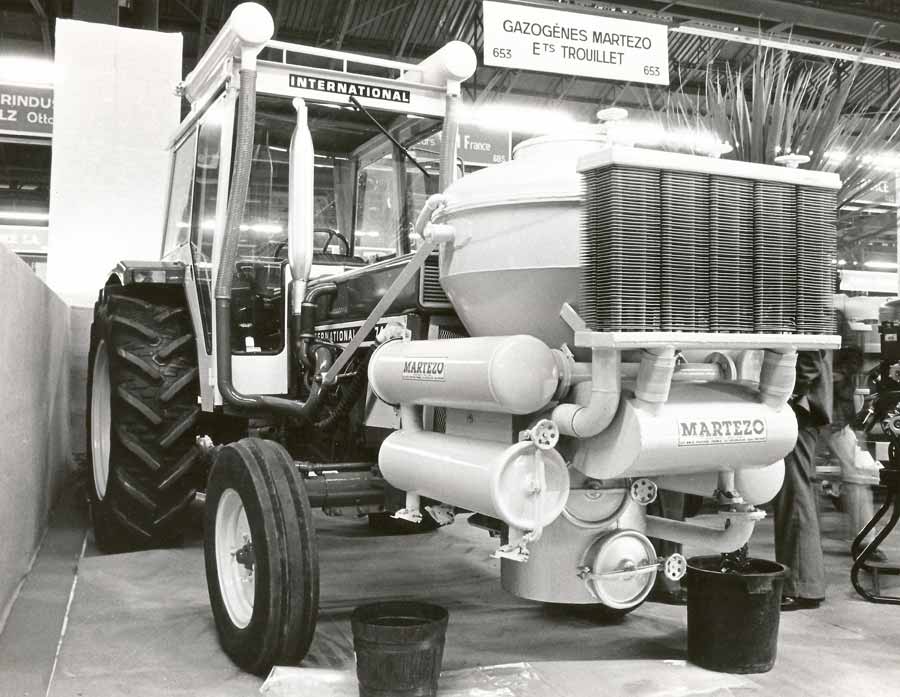
A French-designed Martezo gas generator from the late 1970s
Rising oil prices during the 1970s and 1980s prompted a search for alternative fuels, but most of the interest for powering tractors has been in fuels such as biodiesel, methane and, more recently, electricity, with producer gas rarely mentioned.
In spite of this, rising oil prices helped to bring a brief revival in the demand for gas producing kits for tractors in some African and Asian countries where fuel costs were having a major impact.
New and improved gas generator kits were developed in France to supply the new markets, but sales were disappointing and the demand soon dried up, ending what was probably the final act in the history of tractors fuelled by firewood.

